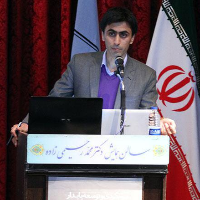Investigating the Effects of Physical renewal on the Quality of Rural Environment (case study: Toos and Mian velayat rural districts)
In recent decades, the necessity of paying attention to the quality of life of villagers in large scale planning, on the one hand, and increasing the damage caused by natural hazards on the other hand lead to highlighting the physical programs in rural settlements of the country. However, the important point that should be considered is that the physical structure of the villages is impoverished due to their historical background and in most cases does not correspond to the current conditions of the villager’s life. Therefore, physical reconstruction is one of the most important rural programs which is currently considered in most villages and can result in have many effects on the villager’s quality of life. So, the purpose of this study is to investigate the effects of physical reconstruction on the quality of rural areas in Mian Velayat and Tous rural districts. The research methodology is a descriptive-analytical and considered as library and field study. Survey method in the form of a household questionnaire has been reviewed by 9 villages of Mian velayat and Tous located in Mashhad city. The results of this study showed that, based on t test, the most effects of the implementation of the physical reconstruction plan on the environmental quality components are related to the formal components with an average of 3.38, and the least significant effect on the semantic component with an average of 2.86. Regression results, however, have shown that the functional components of physical reconstruction shows the highest effect on the quality of the rural environment with a coefficient of 0.345, and formal component with a coefficient of 0.204 has the least effect on the quality of the rural environment. Also, using the gray model, prioritization of villages in terms of the most effective effect of the modernization plan was carried out on them, according to the results; Nazeriye village ranked first with the coefficient of 0.839 and Kharabe Amin ranked the last with coefficient of 0.509.
-
Explaining the effectiveness of memorable experiences from rural tourism destinations on the future behavioral intentions of tourists (case study: rural destinations of Mashhad, Neyshabur and Torghabe Shandiz counties)
Zahra Soleymani, *, Hamid Shayan, Siamak Seyfi
Journal of tourism and development, -
Analyzing factors affecting land use change at rural areas of Mashhad’s urban fringe
*, Aida Sadrossadat
Journal of Rural Research,


